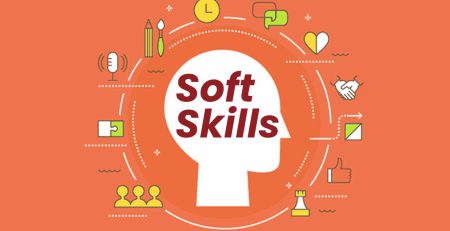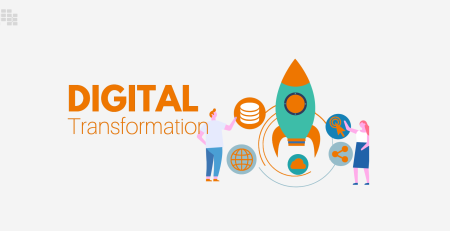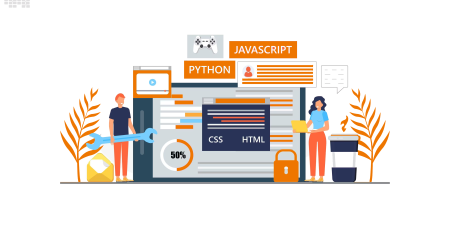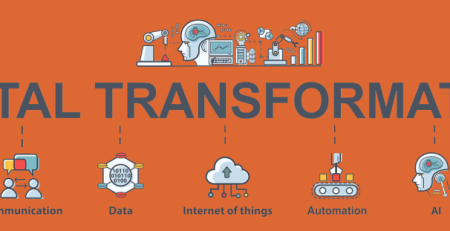AI-Powered Education: A Game-Changer for Startups
Table of Contents
Introduction
In an educational technology system that is changing increasingly, Artificial Intelligence (AI) has become a core element that can no longer be ignored, as it makes profound changes in the way we teach and learn. Technology enabled education is unquestionably altering the outdated models of learning. Application of artificial intelligence (AI) in education is now responsible for several new capabilities. This in-depth study analyzes where the AI-powered education is taking the startups while displaying its impact on the entire education system at large.
Chapter 1: Understanding AI in Education
Artificial Intelligence (AI) has become an integral part of many aspects of modern life, and education is no exception. In this chapter, we will explore the fundamental concepts of AI and how they are applied within the realm of education.
1.1 What is Artificial Intelligence?
Artificial intellect, sometimes referred to as AI and frequently shortened as such, is the technique of imitating human intellect in machines, primarily computer systems. These processes include language perception, learning, thinking, and problem-solving. Artificial intelligence (AI) systems are designed to do activities that traditionally require human intelligence, such language translation, voice understanding, visual interpretation, and decision-making.
1.2 Types of AI in Education
Within the field of education, AI manifests itself in various forms, each serving a specific purpose to enhance teaching and learning experiences:
1.2.1 Machine Learning: Machine learning is a subset of AI that enables systems to learn and improve from experience without being explicitly programmed. In education, machine learning algorithms analyze large datasets to identify patterns and trends, personalize learning pathways, and predict student outcomes.
1.2.2 Natural Language Processing (NLP): Natural Language Processing focuses on the interaction between computers and human languages. In education, NLP enables applications to understand, interpret, and generate human language, facilitating language learning, automated essay scoring, and intelligent tutoring systems.
1.2.3 Computer Vision: Computer vision involves the extraction, analysis, and understanding of information from visual data, such as images and videos. In education, computer vision technologies enable facial recognition for attendance tracking, object recognition for interactive learning activities, and gesture recognition for feedback and assessment.
1.2.4 Virtual Assistants: Virtual assistants, powered by AI, provide personalized support and guidance to students and educators. These intelligent agents can answer questions, provide feedback, and facilitate learning activities, enhancing engagement and productivity in educational settings.
1.3 Applications of AI in Education
The application of AI in education spans across various domains, offering innovative solutions to longstanding challenges:
1.3.1 Personalized Learning: AI-powered adaptive learning systems tailor instructional content, pace, and feedback to meet the individual needs and preferences of each learner. By analyzing student data and behavior, these systems deliver targeted interventions and recommendations, fostering deeper understanding and mastery of concepts.
1.3.2 Intelligent Tutoring Systems: Intelligent tutoring systems leverage AI algorithms to provide personalized tutoring and feedback to students, mimicking the role of human tutors. These systems adapt to the learner’s progress and performance, offering scaffolded support and remediation when needed.
1.3.3 Learning Analytics: Learning analytics utilizes AI techniques to analyze vast amounts of educational data, including student interactions, performance metrics, and learning outcomes. By extracting actionable insights from this data, educators can identify areas for improvement, optimize instructional strategies, and make data-driven decisions to enhance student learning outcomes.
1.3.4 Classroom Automation: AI technologies automate administrative tasks, such as grading, attendance tracking, and course scheduling, freeing up educators’ time to focus on instructional activities and student support. Virtual teaching assistants and chatbots provide immediate assistance to students, answering questions and providing guidance in real-time.
1.4 Challenges and Considerations
While the potential benefits of AI in education are substantial, its implementation is not without challenges and considerations:
1.4.1 Ethical and Privacy Concerns: The collection and analysis of student data raise ethical concerns regarding privacy, consent, and data security. Educators and policymakers must ensure transparent and responsible use of AI technologies to protect students’ rights and uphold ethical standards.
1.4.2 Equity and Inclusivity: AI-powered educational tools have the potential to exacerbate existing disparities in access and opportunity if not implemented thoughtfully. Startups and educational institutions must address issues of equity and inclusivity to ensure that AI benefits all students, regardless of background or circumstance.
1.4.3 Teacher Training and Professional Development: Effective integration of AI technologies in education requires adequate training and support for educators. Professional development programs should equip teachers with the knowledge and skills necessary to leverage AI tools effectively and ethically in their classrooms.
1.4.4 Evaluation and Efficacy: The effectiveness of AI-powered educational interventions must be rigorously evaluated to ensure their impact on student learning outcomes. Startups and researchers should conduct empirical studies and efficacy trials to assess the effectiveness, usability, and scalability of AI technologies in diverse educational settings.
Chapter 2: The Rise of AI-Powered Startups in Education
In recent days, the AI startups have entered entirely the education sector aimed at changing the general teaching and learning by the use of new strategies inspired by AI technology. Such AI -driven startup companies are changing the traditional educational principles, immense creativity as well as solutions to the myriad needs of both students, teachers and finally different institutions. In this chapter we thereby delve into the motives behind the explosion of AI-fostered startups in education and their role in the process of revolutionizing the system.
- Market Demand and Technological Advancements:
The increasing desire for tailored learning experiences, adaptable teaching methods, and analytics-driven decision-making has ignited the ascent of AI-powered startups within the education realm. Progressions in AI technologies, alongside the abundance of educational data, have cultivated a fertile environment for creativity and enterprise in the sector. Startups are leveraging these circumstances to craft AI-driven solutions and platforms that address a broad spectrum of educational requirements and inclinations. - Diverse Solutions Across the Educational Spectrum:
AI-powered startups in the education sector are presenting a wide range of solutions that cover various facets of the educational landscape. From primary and secondary education to higher learning institutions, from traditional classroom setups to digital learning platforms, startups are creating inventive products and services aimed at enhancing teaching efficiency, elevating learning achievements, and simplifying administrative tasks. Whether it’s adaptive learning platforms, intelligent tutoring systems, or virtual classroom environments, AI-driven startups are revolutionizing the methods through which education is imparted and encountered. - Entrepreneurial Innovation and Agility:
The ethos of startups is closely associated with innovation and flexibility, characteristics that are particularly beneficial for the swift creation and implementation of AI-driven solutions in education. In contrast to conventional educational establishments, startups are agile, entrepreneurial entities capable of swiftly responding to market needs, refining their products, and exploring fresh methodologies. This adaptability enables AI-powered startups to maintain a competitive edge, consistently enhancing their offerings and remaining pertinent within a dynamic and challenging environment. - Venture Capital and Investment:
The spread of AI-driven enterprises in the education sector has been made possible by large investments from angel investors, venture capital firms, and other sources of finance. These investors are keen to fund firms that show bright development prospects and creative solutions because they understand the enormous potential that artificial intelligence (AI) technologies have to disrupt and alter the education sector. AI-powered firms can now scale their operations, produce new products more quickly, and reach a wider audience thanks to the infusion of funding. - Collaboration and Partnerships:
Innovation and acceptance in the field are being driven by partnerships and collaborations between educational institutions and AI-powered enterprises. Startups are working with academic institutions, schools, and organizations to co-develop and test new technologies in order to verify their effectiveness and get end-user feedback. These collaborations help AI-powered solutions become more credible and relevant while also making it easier for them to be integrated into already-existing educational ecosystems, which guarantees easy acceptance and deployment. - Global Reach and Impact:
Education firms driven by AI have the potential to significantly change the world by democratizing access to high-quality education and reducing performance gaps. Startups may now reach learners in impoverished communities and rural areas with scalable, affordable technology, offering them before unattainable tailored learning experiences and educational possibilities. Startups are leveling the playing field and enabling students from all backgrounds to achieve by using AI to break down obstacles related to geography, culture, and socioeconomic status.
Chapter 3: Personalized Learning and Adaptive Systems
Personalized learning and adaptive systems represent a revolutionary approach to education, enabled by the power of Artificial Intelligence (AI). In this chapter, we delve into the concept of personalized learning, explore how adaptive systems leverage AI to tailor instruction to individual learners’ needs, and examine the transformative impact of these technologies on the educational landscape.
- Understanding Personalized Learning:
Personalized learning represents a teaching methodology that endeavors to customize instruction and educational experiences to align with the distinct requirements, preferences, and interests of individual students. Conventional uniform teaching approaches frequently fall short in accommodating the diverse learning paces, styles, and capabilities of students, resulting in disengagement and academic shortcomings. Personalized learning endeavors to mitigate this issue by empowering students to assume control over their learning paths, furnishing them with tailor-made resources, tasks, and evaluations that correspond to their specific strengths and areas for improvement. - The Role of AI in Personalized Learning:
By evaluating enormous volumes of data, such as students’ learning profiles, performance indicators, and behavioral patterns, artificial intelligence (AI) plays a critical role in allowing personalized learning. These data are processed by machine learning algorithms, which provide insights into the learning preferences, strong points, and places for development of each individual student. These insights help educators tailor their instructional tactics, choice of content, and pace to each learner’s specific requirements. These insights also guide the design and delivery of personalized learning experiences. - Benefits of Personalized Learning:
There are several advantages to personalized learning for educators, students, and educational institutions. Personalized learning increases student engagement, motivation, and academic performance by meeting their unique learning requirements and preferences. Better learning outcomes result from its ability to help instructors recognize and close learning gaps. Additionally, by catering to a variety of student demographics and offering focused assistance to underprivileged students, customized learning fosters a more equal and inclusive learning environment. - Adaptive Learning Systems:
Personalized learning technologies include adaptive learning systems, which dynamically modify education according upon students’ performance and replies. These systems employ artificial intelligence (AI) algorithms to evaluate how students engage with the material, gauge their conceptual comprehension, and modify the activities’ complexity and order as necessary. In order to maximize each student’s learning potential and maximize their educational journey, adaptive learning systems can offer rapid feedback, scaffold learning experiences, and tailor training in real time. - Examples of Adaptive Learning Technologies:
In recent years, a number of AI-powered adaptive learning platforms and applications have surfaced, providing creative ways to enhance individualized learning experiences. Predictive analytics, for instance, is used by adaptive learning management systems (LMS) to provide students with personalized learning routes and materials. By providing adaptive education and feedback in response to student performance, intelligent tutoring systems (ITS) lead students through individualized learning sequences. Applications for augmented reality (AR) and virtual reality (VR) produce dynamic, immersive learning environments that adjust to students’ choices and activities, increasing engagement and retention. - Challenges and Considerations:
Although adaptive learning and customized learning have enormous potential to improve student results, there are issues and concerns that need to be taken into account. These include worries about security and privacy of data, the necessity of a strong infrastructure and technological assistance, and the significance of professional development and teacher preparation. Promoting inclusion and justice in education also requires addressing possible biases in AI algorithms and guaranteeing equal access to personalized learning technology. - Future Directions and Opportunities:
Personalized learning and adaptive systems have a bright future ahead of them, full with opportunities for advancement and expansion. We may anticipate seeing more complex and adaptable learning environments with even higher degrees of personalization and interaction as AI technologies develop. Furthermore, the effectiveness and usefulness of customized learning solutions will be further improved by the integration of AI with other cutting-edge technologies including natural language processing, emotional computing, and personalized recommendation systems.
Chapter 4: Intelligent Tutoring and Learning Analytics
In the realm of education, the fusion of Artificial Intelligence (AI) with tutoring and learning analytics has opened doors to a new era of personalized, data-driven instruction. This chapter explores the concepts of intelligent tutoring systems and learning analytics, showcasing their role in optimizing educational outcomes and empowering both learners and educators.
- Intelligent Tutoring Systems (ITS):
A sophisticated use of AI in education is Intelligent Tutoring Systems (ITS), which provide individualized and adaptive training based on the needs of each individual student. By simulating one-on-one tutoring sessions and using AI algorithms, these systems give students immediate feedback, direction, and scaffolding. ITS adaptively modifies instructional material, tempo, and difficulty levels to maximize learning outcomes by evaluating learner interactions and performance data. - Components of Intelligent Tutoring Systems:
Intelligent Tutoring Systems typically consist of several key components, including:
- Student Model: A representation of the learner’s knowledge, skills, and learning preferences, which the system uses to personalize instruction.
- Expert Model: A repository of domain-specific knowledge and instructional strategies that the system draws upon to provide guidance and feedback.
- Problem Solver: An algorithmic component that generates and evaluates learning tasks and exercises, dynamically adjusting their complexity based on student performance.
- User Interface: The interface through which learners interact with the system, accessing instructional content, receiving feedback, and tracking their progress.
- Benefits of Intelligent Tutoring Systems:
There are several advantages to Intelligent Tutoring Systems for both teachers and students. ITS offers customized assistance to students, promoting increased comprehension, proficiency, and recall of the material. They provide learners with quick feedback and coaching, assisting them in overcoming hurdles and navigating difficult tasks. Teachers may tailor their lesson and receive vital information regarding the learning progress and challenges of their students thanks to ITS. Additionally, they support the development of metacognitive abilities and self-directed learning, enabling students to take charge of their own education. - Examples of Intelligent Tutoring Systems:
Numerous intelligent tutoring systems have been developed across various educational domains, including mathematics, language learning, science, and programming. For example:
- Carnegie Learning’s Cognitive Tutor provides personalized math instruction, adapting to students’ individual learning needs and tracking their progress over time.
- Duolingo offers an AI-powered language learning platform that adapts to learners’ proficiency levels and preferences, using spaced repetition algorithms to optimize learning efficiency.
- SMART Tutor is an intelligent tutoring system for STEM education, offering personalized instruction and assessment in science, technology, engineering, and mathematics subjects.
- Learning Analytics:
The Learning Analytics is a computerized procedure of gathering, processing, and interpretation of a learner interactions and outcomes performance in learning processes. This capability is possible because of learning analytics which combines data from a variety of sources, including learning management systems, assessment tools and digital learning resources. Due to this approach, educators are allowed to have a better insight into student learning behaviors, engagement and academic outcomes. These insights, therefore, are used as the basis for instances of adjusting administration decisions, curriculum design, and even educational policy development in a bid to make teaching more effective and learning a success. - Applications of Learning Analytics:
Learning Analytics can be applied across diverse educational contexts and purposes, including:
- Predictive Analytics: Forecasting student outcomes and identifying at-risk learners who may require additional support or intervention.
- Adaptive Learning: Personalizing instruction and content delivery based on real-time learner data and performance metrics.
- Formative Assessment: Providing timely feedback to students and educators to guide ongoing learning and instructional improvement.
- Institutional Research: Analyzing aggregate data to assess program effectiveness, measure learning outcomes, and inform strategic planning and decision-making.
- Challenges and Considerations:
While intelligent tutoring systems and learning analytics offer immense potential for enhancing teaching and learning, they also pose challenges and considerations that must be addressed. These include:
- Data Privacy and Security: Ensuring the responsible collection, storage, and use of learner data to protect privacy and confidentiality.
- Ethical Use of AI: Mitigating biases and ethical concerns associated with AI algorithms, ensuring fairness and equity in decision-making processes.
- Professional Development: Providing educators with the knowledge, skills, and support needed to effectively leverage intelligent tutoring systems and learning analytics in their practice.
- Integration with Existing Systems: Ensuring seamless integration with existing educational technologies and infrastructure to maximize usability and adoption.
Chapter 5: Enhancing Teacher Efficiency and Support
Teachers are key players in determining how pupils learn in the ever-changing field of education. With the ever-changing demands on educators, integrating Artificial Intelligence (AI) technology offers never-before-seen opportunity to boost teacher productivity and offer invaluable support. This chapter examines the ways in which AI-powered platforms and applications are enabling more individualized learning, empowering instructors, and simplifying administrative duties.
- The Changing Role of Teachers in the Digital Age:
As a result of the development of digital technology and the spread of online learning environments, instructors now have more obligations in addition to traditional teaching duties. Teachers are required to present information, lead conversations, use technology, analyze data, and adapt their lessons to the different requirements of their pupils. When it comes to navigating these changing demands and attempting to build interesting and successful learning environments, AI-powered solutions provide educators with crucial help. - Streamlining Administrative Tasks with AI:
Artificial Intelligence (AI) in education offers several advantages, chief among them the automation of laborious administrative duties that take up time. This frees up instructors to concentrate more on teaching and student assistance. AI-powered systems may help with grading assignments, scheduling exams, managing resources in the classroom, and organizing course materials, among other things. AI helps instructors spend more of their important time and resources on professional development and more meaningful interactions with students by automating these administrative activities. - Personalizing Instruction with AI:
By evaluating student data, finding learning gaps, and customizing learning experiences to meet individual requirements, artificial intelligence (AI) technologies empower educators to provide more individualized training. AI algorithms are used by adaptive learning systems to evaluate students’ knowledge and abilities, provide focused interventions, and modify course material in real time in response to student performance. Intelligent tutoring programs guide students through difficult topics and scaffold their learning process by offering individualized feedback and assistance. - Supporting Differentiated Instruction:
Students in every classroom come from a variety of backgrounds and have different learning preferences. AI-powered resources help teachers implement differentiated education by giving them knowledge about the preferences, strengths, and weaknesses of their pupils. Learning analytics solutions use student data analysis to spot patterns and trends. This helps teachers tailor their lessons, put students in groups according to needs that are similar to their own, and help difficult students with specific interventions. AI improves the efficacy and inclusiveness of education by meeting the individual requirements of every learner. - Professional Development and Teacher Training:
Initiatives for teacher training and professional development are also greatly aided by AI technology. Professional development systems driven by AI provide chances for feedback and discussion, as well as tailored learning paths and carefully selected materials. By giving teachers access to on-demand help and advice, virtual coaching systems enable them to improve their teaching methods and keep up with the latest developments in the field of education. Teachers may boost their efficacy in the classroom and constantly improve their abilities by utilizing AI for professional development. - Addressing Challenges and Ethical Considerations:
Although AI has enormous promise to improve teacher effectiveness and assistance, it also presents significant ethical issues and obstacles. Teachers may be wary of or resistant to AI technology because they worry about algorithmic bias, losing their autonomy, and losing their jobs. To guarantee that AI-powered tools protect student privacy, advance fairness and inclusion in education, and are in line with pedagogical objectives, educators must be involved in their development and deployment. - Future Directions and Opportunities:
The future is full with potential prospects to significantly improve teacher assistance and efficiency as AI technologies develop. Virtual reality, affective computing, and natural language processing are some examples of additional cutting-edge technologies that when combined with AI will make learning more dynamic and immersive for both teachers and students. Furthermore, utilizing AI to its fullest potential to enhance teaching and learning in the digital age will need continued study and cooperation between educators, technologists, and politicians.
Chapter 6: Addressing Equity and Inclusion in Education
Equity and inclusion are fundamental principles that underpin the mission of education: to provide every learner with the opportunity to succeed, regardless of their background, identity, or circumstances. In this chapter, we explore the critical role of Artificial Intelligence (AI) in addressing equity and inclusion in education, examine the challenges and barriers that must be overcome, and discuss strategies for leveraging AI to create more equitable and inclusive learning environments.
- Understanding Equity and Inclusion in Education:
When we talk about equity in education, we mean making sure that every student has access to the tools, opportunities, and support they require to reach their greatest potential. On the other side, inclusion entails developing learning settings that value variety, honor individual differences, and provide every student a sense of inclusion—regardless of their ability, gender, financial background, or race. In order to achieve equality and inclusion, prejudices must be challenged, structural impediments must be addressed, and fairness and social justice must be promoted in the classroom. - The Promise of AI for Equity and Inclusion:
The AI is able to take an eminent position in making changes in the field of education to meet the equity and inclusiveness by dealing with prevailing discrepancies and giving special attention to disadvantaged students. By implementing AI-based tools and platforms, it is possible to examine large volumes of data on student performance and attendance to detect even the slightest changes and recurring tendencies. AI helps tease out the faults and gives core reasons of educational inequality. Through that, educators and policy makers could create more effective and progressive strategies promoting fairness and equality. - Personalized Learning and Individualized Support:
AI-enabled personalized learning enables teachers to adapt their lessons to the particular requirements, interests, and strengths of each student. AI-powered solutions assist in addressing learning gaps, accommodating a variety of learning styles, and promoting academic achievement for all students, regardless of their background or ability, by offering tailored assistance and adaptive interventions. Students who get personalized learning have the ability to take charge of their education and flourish in settings that appreciate and acknowledge their individual contributions. - Access and Affordability:
A significant hurdle in attaining educational equity is guaranteeing that every student, irrespective of their location or socioeconomic background, can access top-tier learning opportunities. AI-driven technologies, like online learning platforms, virtual tutoring systems, and mobile applications, hold promise in broadening educational access and narrowing the digital gap by offering adaptable, cost-effective, and scalable learning solutions. Through the utilization of AI to deliver content and assistance remotely, educators can extend their reach to underserved communities, furnishing educational opportunities that were previously out of reach. - Addressing Bias and Fairness in AI:
While AI presents significant ethical questions about prejudice, fairness, and algorithmic transparency, it also has the potential to advance diversity and inclusion in education. Inadvertently sustaining or amplifying preexisting prejudices in educational settings using AI algorithms might result in unequal outcomes for underrepresented groups. Fairness, accountability, and transparency must be given top priority by developers and policymakers when designing, implementing, and assessing AI-powered educational technologies in order to guarantee that they support inclusion and equity for all students. - Culturally Responsive Pedagogy and Multilingual Support:
In the teaching and learning process, culturally responsive pedagogy entails appreciating and acknowledging students’ identities, experiences, and cultural origins. By offering multilingual support, culturally relevant information, and individualized learning experiences that take into account students’ varied language and cultural backgrounds, AI-powered solutions can enhance culturally responsive training. Teachers may establish inclusive learning environments where all students feel respected, valued, and encouraged to thrive by embracing language variety and cultural pluralism. - Community Engagement and Stakeholder Collaboration:
Collaboration and cooperation between educators, policymakers, families, communities, and other stakeholders are necessary to achieve fairness and inclusion in education. AI technology can help promote community involvement by offering instruments for cooperation, communication, and data exchange. Policymakers and educators may guarantee that AI-powered solutions are sensitive to the particular needs and goals of the communities they serve by including stakeholders in decision-making processes and co-designing educational initiatives. - Professional Development and Capacity Building:
For educators, administrators, and other stakeholders, continual professional development and capacity building are essential to the effective application of AI in education. The knowledge, abilities, and competences educators need to effectively use AI technology, address equity concerns, and provide inclusive learning environments may be developed with the use of training programs and resources. Through funding professional development and capacity building, educational institutions may create a future where all students are included and treated fairly.
Chapter 7: Overcoming Challenges and Adoption Barriers
Despite the promising potential of Artificial Intelligence (AI) in education, widespread adoption and implementation of AI-powered solutions face significant challenges and barriers. In this chapter, we explore the obstacles that hinder the integration of AI in educational settings and discuss strategies for overcoming these challenges to realize the transformative benefits of AI in education.
- Technical Complexity and Infrastructure Requirements:
The technological difficulty of putting AI-powered systems into place and keeping them maintained is one of the biggest obstacles to the adoption of AI in education. It’s possible that educational institutions lack the knowledge, experience, and resources needed to assist AI efforts. These resources include network connectivity, data storage, and computing power. Furthermore, it might be difficult and time-consuming to integrate AI technology with current educational practices and systems. - Cost and Resource Constraints:
An other major obstacle to the use of AI in education is its cost, especially for financially stressed districts and schools. Artificial intelligence (AI) solutions can need a large initial investment in technology, software licensing, training, and continuing support and upkeep. Prioritizing investments that are in line with strategic goals and priorities requires educational leaders to carefully assess the long-term viability and cost-effectiveness of AI projects. - Data Privacy and Security Concerns:
Privacy and security concerns pose a significant barrier to the adoption of AI in education, particularly in light of stringent data protection regulations such as the General Data Protection Regulation (GDPR) and the Family Educational Rights and Privacy Act (FERPA). Educational institutions must ensure that AI-powered systems comply with applicable privacy laws and regulations, protect sensitive student data, and safeguard against unauthorized access, breaches, and misuse. - Ethical Considerations and Algorithmic Bias:
When using AI in education, there are several ethical issues to be resolved, including algorithmic bias, fairness, and transparency. Inadvertently sustaining or amplifying preexisting prejudices in educational settings using AI algorithms might result in unequal outcomes for underrepresented groups. To reduce the possibility of bias and advance diversity and inclusion in education, educational leaders must place a high priority on fairness, accountability, and openness in the development, use, and assessment of AI-powered solutions. - Resistance to Change and Cultural Barriers:
Implementation of AI is an obstacle that may arise due to the systemic culture of educational institutions which impedes their openness to the adoption of applied technologies. Teachers, estate and other contributors in the process could fail to acknowledge AI-powered methods because of the fear of job loss, loss of self-governance or inability of implementation. Conquering this kind of opposition requires good communication, stakeholder involvement, and employee training so that trust among people is built, concerns are relieved, and organization where innovation and cooperation is the culture is established. - Lack of Evidence-Based Research and Efficacy Studies:
Another issue impeding the use of AI in education is the dearth of thorough research and efficacy evaluations. In the absence of strong proof of AI-powered solutions’ efficacy and influence on student learning outcomes, educational leaders would be reluctant to make investments in them. To illustrate the benefits of AI technology, find best practices, and guide resource allocation and decision-making, well-designed research studies and effectiveness trials must be carried out. - Digital Divide and Accessibility Issues:
A significant barrier to the use of artificial intelligence (AI) in education is the existence of the “digital divide,” which is typified by differences in internet connectivity and technological access. Students from low-income homes, remote locations, and marginalized populations might not have access to the necessary gear, software, or internet to fully take advantage of AI-driven learning possibilities. To close the digital divide, all students—regardless of financial situation—must have fair access to technology, online resources, and instruction in digital literacy. - Professional Development and Training Needs:
Teachers, administrators, and other stakeholders must continue their professional growth and training in order for AI to be implemented in education effectively. It’s possible that a large number of instructors lack the expertise needed to successfully integrate AI technology into their lesson plans. Giving teachers access to extensive training curricula, tools, and support systems can help them become more proficient, gain confidence, and incorporate AI-powered technologies into their daily teaching practices.
Chapter 8: Future Trends and Opportunities
As Artificial Intelligence (AI) continues to evolve and permeate various sectors, its impact on education is poised to undergo significant transformation. In this chapter, we explore emerging trends and opportunities in AI-powered education, envisioning a future where innovative technologies reshape teaching and learning experiences, and unlock new possibilities for educators and learners alike.
- Immersive Learning Environments:
The integration of AI with immersive technologies such as virtual reality (VR) and augmented reality (AR) holds immense potential for creating engaging and interactive learning environments. In the future, students may immerse themselves in virtual simulations, explore historical events in 3D, or conduct virtual science experiments, enhancing their understanding and retention of complex concepts. - Adaptive Content and Learning Pathways:
AI algorithms will continue to evolve, enabling the development of adaptive learning platforms that deliver personalized content and learning pathways tailored to each student’s unique needs and preferences. These platforms will analyze individual learning styles, progress, and performance data to provide targeted recommendations and interventions, maximizing learning outcomes and fostering student autonomy. - Natural Language Processing (NLP) and Conversational Interfaces:
Advancements in natural language processing (NLP) will enable the development of conversational interfaces and intelligent tutoring systems that engage students in natural language dialogue, providing personalized feedback, guidance, and support. These AI-driven chatbots and virtual assistants will enhance student-teacher interactions, facilitate collaborative learning experiences, and offer on-demand assistance anytime, anywhere. - Data-Driven Decision-Making and Learning Analytics:
Learning analytics platforms powered by AI will continue to evolve, enabling educators to make data-driven decisions and interventions that optimize teaching and learning processes. AI algorithms will analyze vast amounts of student data to identify patterns, trends, and insights, informing instructional design, curriculum development, and assessment strategies. - Ethical AI and Responsible Innovation:
As AI technologies become more pervasive in education, there will be a growing emphasis on ethical considerations, responsible innovation, and algorithmic transparency. Educators, policymakers, and technologists will collaborate to develop ethical guidelines, standards, and best practices for the design, implementation, and evaluation of AI-powered educational technologies, ensuring that they promote equity, inclusivity, and student well-being. - Lifelong Learning and Continuous Skill Development:
The future of education will be characterized by a shift towards lifelong learning and continuous skill development, driven by rapid technological advancements and evolving workforce demands. AI-powered adaptive learning platforms will support personalized learning journeys, enabling individuals to acquire new knowledge and skills at their own pace and convenience, throughout their lives and careers. - Global Collaboration and Knowledge Sharing:
AI technologies will facilitate global collaboration and knowledge sharing among educators, researchers, and learners across geographical and cultural boundaries. Online platforms and social networks powered by AI will connect individuals with shared interests and expertise, fostering collaborative learning communities, interdisciplinary research collaborations, and cross-cultural exchanges. - Teacher Empowerment and Professional Development:
AI technologies will empower teachers by providing them with tools and resources to enhance their instructional practice, streamline administrative tasks, and support student learning. Professional development programs and communities of practice will enable educators to build expertise in AI integration, data literacy, and digital pedagogy, ensuring that they are equipped to harness the full potential of AI in education.













Leave a Reply